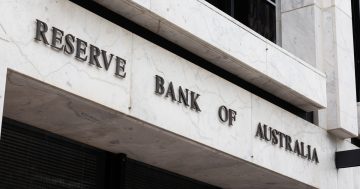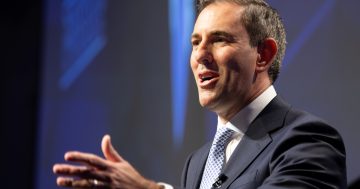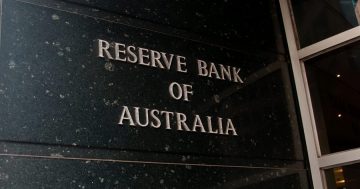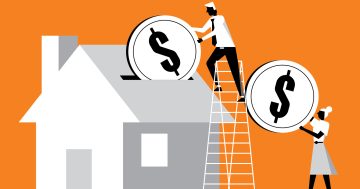Michael Janda* says the Reserve Bank is blaming population growth and housing supply and demand for the boom and bust in the property market.
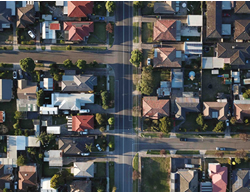
Photo: Tom Rumble
The Reserve Bank of Australia (RBA) is maintaining it is the supply of and demand for housing that has accounted for most of the recent large swings in home prices, rather than the availability or cost of home loans.
The bank also remains deeply concerned about the low level of wages growth, saying is more likely to be damaging consumer spending and the economy than falling home values.
Speaking at the AFR’s annual business summit, RBA Governor, Dr Philip Lowe said property price falls of the scale seen in Sydney and Melbourne over the past year to 18 months have been seen before.
“Declines of this magnitude are unusual but they are not unprecedented,” Dr Lowe said.
“In 2008 and 2010, prices fell by a similar amount, as they did on two occasions in the 1980s.”
“In the 1980s, the rate of CPI inflation was higher than it is now so, in inflation-adjusted terms, the declines then were larger than the current one.”
Dr Lowe pointed out that in contrast to previous housing market falls driven by weaker economic conditions and/or rising interest rates, neither had caused the current downturn.
“The origins of the current correction in prices do not lie in interest rates and unemployment,” he observed.
“Rather, they largely lie in the inflexibility of the supply side of the housing market in response to large shifts in population growth.”
But Dr Lowe said low interest rates and Government policies supportive of investors, such as negative gearing and the 50 per cent Capital Gains Tax discount, did add to speculative demand once prices were on their way up, magnifying the price rises.
“The strong demand from investors had its roots in the population dynamics,” he argued.
“Low interest rates and favourable tax treatment added to the attraction of investing in an appreciating asset.”
RBA says Hayne not to blame for house price falls
Many analysts have attributed a large part of the responsibility for house price falls to tighter lending standards, but Dr Lowe downplayed this effect.
“The RBA’s liaison suggests that, on average, the maximum loan size offered to new borrowers has fallen by around 20 per cent since 2015,” he said.
“Even so, only around 10 per cent of people borrow the maximum they are offered.”
“Sensibly, most people borrow less than what they are offered, so the effect of this reduction in borrowing capacity has not been particularly large.”
Despite this, Dr Lowe admitted that some banks may have gone too far in tightening their home loan application processes.
“This meant that credit conditions tightened more than was probably required,” he said.
“Now, as lenders continue to seek the right balance, we need to remember that it is important that banks are prepared to take credit risk.”
Dr Lowe said, ultimately, the fall in home prices would end when enough owner-occupiers saw value in the market, with investors likely to be sidelined for some time yet.
“Over recent times, the number of people reporting that an investment in real estate is the wisest place for their savings has fallen significantly,” he observed.
“So, it is not surprising that there are fewer investors in the market.”
“At the same time, the number of people saying it is a good time to buy a home has increased.”
“Lower prices draw more people in and, eventually, this helps stabilise the market.”
Car dealers, furniture sellers feel the brunt of housing downturn
Dr Lowe said a key area of interest for the Bank was what effect the fall in house prices might have on consumer spending, which makes up around 60 per cent of the economy.
This is the so-called “wealth effect” — as the theory goes, when asset values rise, the people who own them feel richer and become more willing to spend, which can work in reverse as asset values fall.
The RBA Governor said his staff had done economic modelling to estimate the effect.
“They estimate that a 10 per cent increase in net housing wealth raises the level of consumption by around 0.75 per cent in the short run and by 1.5 per cent in the longer run,” he revealed.
“They find that it is highest for spending on motor vehicles and household furnishings and that for many other types of spending the effect is not significantly different from zero.”
This wealth effect is showing up in some economic data; however, Dr Lowe added that it may not have increased spending as much while house prices were rising on the east coast over the past five years or so, and therefore may not lower spending as much as real estate values fall.
Dr Lowe said a bigger effect on consumer spending may come from workers who are no longer expecting the size of pay increases they used to get and are now unwilling to run down their savings further in the hope of a bigger pay cheque in the future.”
“As the period of weak income growth has persisted, it has become harder to ignore it,” he said.
“Expectations of future income growth have been revised down and it is likely that this is affecting spending.”
* Michael Janda is the ABC’s senior digital business reporter. He tweets at @mikejanda.
This article first appeared at www.abc.net.au.


